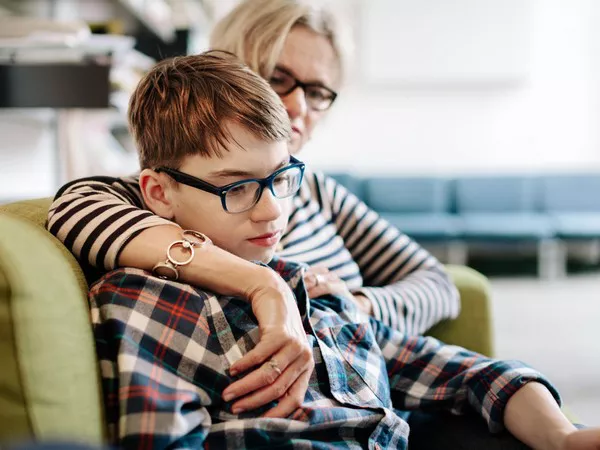Love is one of the most profound and complex human emotions. It transcends mere affection or attachment, embodying a powerful mix of psychological, emotional, and even physiological elements that bind individuals together. As a psychologist, I frequently explore the nature of love and how it manifests in relationships. Understanding why and how someone can love another person so deeply involves delving into various psychological theories and emotional dynamics.
In this article, we will explore the different dimensions of love, including its psychological foundations, emotional expressions, and the factors that contribute to the depth of love one person can feel for another.
1. The Psychological Foundations of Love
At its core, love is a multifaceted emotion that can be examined through various psychological theories. Two prominent frameworks for understanding love are Robert Sternberg’s Triangular Theory of Love and John Bowlby’s Attachment Theory.
A. Sternberg’s Triangular Theory of Love
Sternberg’s theory posits that love consists of three components: intimacy, passion, and commitment.
Intimacy refers to the emotional connection and bond that develops between partners. It involves feelings of closeness, connectedness, and mutual understanding.
Passion encompasses the physical attraction and sexual desire that often characterize romantic relationships. It’s the spark that ignites the initial attraction.
Commitment involves the decision to maintain the relationship over time, reflecting a desire to build a future together.
When these three components are balanced, they create a strong foundation for deep love. For example, a relationship characterized by high intimacy and commitment but low passion may reflect a deep friendship, whereas a relationship with high passion but low commitment may lead to fleeting romances.
B. Bowlby’s Attachment Theory
Attachment theory, developed by John Bowlby, emphasizes the importance of early relationships, particularly between children and their caregivers, in shaping how individuals experience love and attachment in adulthood. Bowlby identified three primary attachment styles:
Secure Attachment: Individuals with this style feel comfortable with intimacy and are able to express love freely. They often experience healthier, more stable relationships.
Anxious Attachment: Those with an anxious attachment style may have a heightened fear of abandonment and often experience intense emotions. Their love can be characterized by clinginess and a strong need for reassurance.
Avoidant Attachment: Individuals with an avoidant attachment style may struggle with intimacy and may appear emotionally distant. They often prioritize independence over closeness.
Understanding your own attachment style and that of your partner can provide valuable insights into how and why love can be expressed so profoundly in certain relationships.
2. The Emotional Expressions of Love
Love is not just a feeling; it’s also an experience that manifests through actions and behaviors. Emotionally, love can be expressed in numerous ways:
A. Emotional Vulnerability
Deep love often involves a willingness to be emotionally vulnerable with another person. This means sharing your fears, dreams, insecurities, and desires without fear of judgment. When both partners allow themselves to be vulnerable, it creates a safe space for deeper emotional intimacy to flourish.
This vulnerability is crucial for building trust and enhancing emotional connection. As partners open up to one another, they foster an environment where love can grow and deepen over time.
B. Acts of Service and Sacrifice
Love is often expressed through acts of service—doing things for your partner that make their lives easier or more enjoyable. This can range from small gestures, like making coffee in the morning, to significant sacrifices, such as moving to a new city for a partner’s job opportunity.
These acts demonstrate commitment and care, reinforcing the bond between partners. Research has shown that couples who engage in acts of kindness and support experience higher levels of relationship satisfaction and deeper emotional connections.
C. Quality Time
Spending quality time together is another essential aspect of nurturing love. Engaging in shared activities, whether it’s cooking, hiking, or simply watching movies, helps partners strengthen their bond. Quality time fosters communication and allows couples to create shared memories, which are vital for long-term relationship satisfaction.
3. Biological and Physiological Factors
The experience of love is not just psychological; it also has a biological basis. Neurotransmitters and hormones play a significant role in how we feel love.
A. The Role of Neurotransmitters
When someone falls in love, the brain releases a cocktail of chemicals that enhance feelings of pleasure and attachment. Key neurotransmitters include:
Dopamine: Often referred to as the “feel-good” neurotransmitter, dopamine is associated with the pleasure and reward system in the brain. High levels of dopamine during the initial stages of love can create feelings of euphoria and obsession.
Oxytocin: Known as the “bonding hormone,” oxytocin is released during physical intimacy and strengthens emotional bonds. It plays a crucial role in deepening feelings of attachment and trust between partners.
Vasopressin: This hormone is also linked to long-term attachment and commitment, especially in male partners. Research suggests that vasopressin may promote protective behaviors and strengthen emotional connections.
See Also: What Does It Feel Like to Find Your Soulmate?
B. Physiological Responses
The physiological responses associated with love can also enhance emotional experiences. For instance, when you’re in love, you may experience:
Increased heart rate and adrenaline release when you see your partner.
Butterflies in your stomach, a result of adrenaline coursing through your body.
A sense of calm and safety when you are with your partner, largely due to the effects of oxytocin.
These physical sensations can reinforce the emotional experience of love, making it feel more intense and profound.
4. The Role of Shared Experiences and Growth
Shared experiences and mutual growth are essential for cultivating deep love. When partners embark on new adventures together—whether it’s traveling, pursuing a common goal, or overcoming challenges—they create a shared narrative that strengthens their bond.
A. Facing Challenges Together
Going through tough times together can significantly enhance love. Facing adversity requires partners to rely on each other for support, fostering emotional closeness. When couples successfully navigate challenges, they often emerge with a stronger bond and a deeper appreciation for one another.
B. Personal Growth
In a loving relationship, both partners should encourage and support each other’s personal growth. When individuals feel valued and empowered to pursue their interests and goals, it enhances their self-esteem and overall satisfaction in the relationship.
5. Cultural and Social Influences on Love
The way love is experienced and expressed can also be influenced by cultural and societal norms. Different cultures have varying beliefs about love, relationships, and marriage, which can shape how individuals understand and express their feelings.
A. Cultural Norms and Expectations
Cultural backgrounds can influence expectations around love and relationships. For instance, some cultures may prioritize arranged marriages, where love is expected to develop over time, while others may emphasize passionate romantic love as the foundation for relationships.
Understanding these cultural influences can help individuals navigate their feelings of love within the context of their backgrounds, potentially enriching their experiences and perspectives.
B. Social Support Systems
The presence of a supportive social network can significantly impact how deeply one can love another person. Support from friends and family can provide a safety net for couples, allowing them to explore their feelings without fear of isolation or judgment.
Conclusion
The ability to love someone deeply is a rich tapestry woven from psychological, emotional, biological, and social threads. It involves vulnerability, emotional investment, shared experiences, and a commitment to mutual growth. Understanding the complexities of love not only enriches our relationships but also helps us navigate the emotional landscape that comes with such profound connections.
Ultimately, love is a journey—one that is unique for each individual and relationship. Whether you are experiencing the exhilarating rush of new love or the comforting depth of a long-term partnership, recognizing the dynamics at play can help you appreciate the beauty of human connection. As you embrace love, remember that it is a powerful force that can transform your life and the lives of those around you.
Related topics:




























